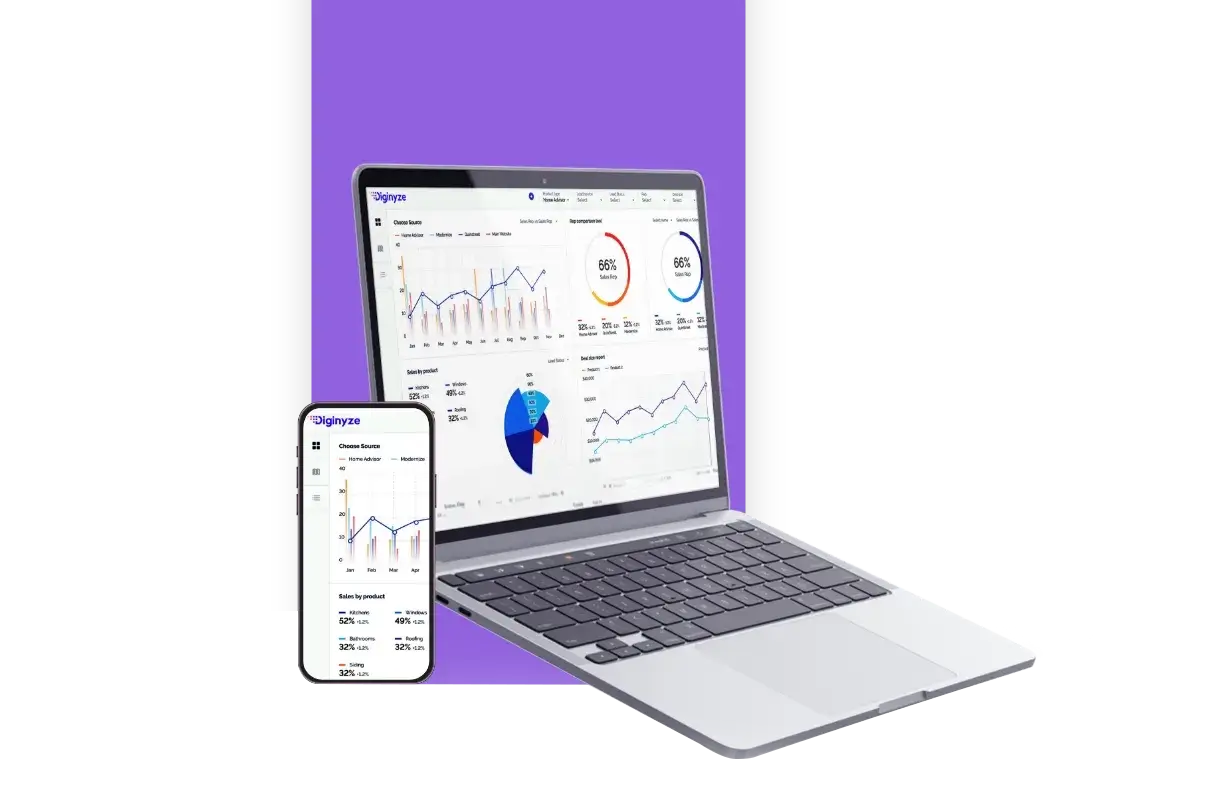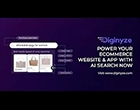What factors make the Multi-Vendor Marketplace model advantageous for Enterprise brands to contemplate?
Online marketplaces are hot, thanks to giants like Amazon. These "Multi-Vendor Marketplaces" let brands sell online withou1t holding any inventory, using their existing vendors. This means easy scaling, reaching new markets, and making money through vendor fees, subscriptions, and more. It's a win-win for brands looking to go digital.
Top Multi-Vendor Marketplaces in the world
- Amazon: A global online marketplace leader, deriving a significant share of revenue from third-party sellers, is estimated to surpass $500 billion in marketplace revenue in 2023.
- Alibaba: Primarily focused on B2B transactions, Alibaba facilitates trade between businesses worldwide. Their 2023 marketplace revenue is estimated to be around $1 trillion.
- eBay: eBay, a trailblazer in online marketplaces, faces competition from Amazon but maintains a strong position, expecting $77 billion in marketplace revenue in 2023.
- JD.com: This Chinese eCommerce giant operates primarily in its home market, offering a vast selection of products. Their 2023 marketplace revenue is estimated to be around $410 billion.
- Walmart Online Marketplace: Though a newcomer compared to others on this list, Walmart Marketplace has grown rapidly. Their 2023 marketplace revenue is estimated to be around $135 billion.
Global Online Marketplace growth trends
- The Top 100 global marketplaces experienced a 2.9% growth in total gross merchandise volume (GMV) in 2022.
- U.S.-based marketplaces within the Top 100 saw a slight GMV decline of 0.05% in 2022.
- Over the past three years, these marketplaces have shown a compound annual growth rate (CAGR) of 16.2% in total GMV.
- First-party GMV for U.S. marketplaces increased by 1.6% in 2022.
- Niche sites, notably sneaker marketplaces like GOAT and Flight Club, emerged as top performers in 2022.
Source: Digital Commerce 360
What factors should wholesale brands consider when considering the development of their B2B marketplace?
93% of B2B buyers shop online, skipping traditional agents. This shift towards self-service buying demands online B2B marketplaces. Building one modernizes your business, manages networks, and automates sales, leading to faster sales cycles and a profitable online presence (56% of businesses agree).
Top global B2B Market places
- Alibaba.com: Dominant B2B platform, especially in China. Revenue part of Alibaba Group's $131.4 billion (2023).
- Amazon Business: Major B2B player with vast product selection and established infrastructure. Revenue estimated in billions.
- IndiaMart: India's leading B2B marketplace with over 98 million buyers and 6.6 million suppliers (July 2023).
- eWorldTrade: Global platform facilitating international trade with services like supplier verification.
- Global Sources: Asian-focused B2B platform specializing in trade shows and online marketplaces.
Global B2B Marketplace Growth Trends
- Projected to expand from USD 7,432.12 billion in 2022 to USD 36,107.63 billion by 2031, with a 19.2% CAGR.
- Ease of product comparison, trusted transactions, advertising opportunities for suppliers, and cost savings for buyers.
- Increased participation of start-ups, leveraging market opportunities for innovation and profit.
- Led by North America, with a significant online shift and key players like Amazon and Alibaba.
- Caters to various sectors including automotive, IT, and manufacturing, showing wide-ranging impact.
What new growth opportunities are being unlocked for brands through D2C eCommerce?
In the US, the D2C model has sparked an eCommerce revolution, giving brands greater control and enabling them to reach the $10 million benchmark in just 2-8 years, compared to the 20-year average for traditional brands. By eliminating middlemen, D2C brands enjoy higher profits, pass on cost savings for stronger customer loyalty, and leverage data for personalized offerings and strategic decision-making, ultimately empowering them to deeply connect with their target audience.
Future of D2C eCommerce
- AI boosts satisfaction with personalized product recommendations (44% expect it based on browsing history).
- Omnichannel integration caters to diverse preferences, with global eCommerce sales set to hit $7.4 trillion by 2025.
- Brands focusing on shared values and sustainability attract customers; 73% pay a premium for eco-friendly products.
- AR/VR offers immersive experiences, while Web3 may revolutionize transactions.
- Subscription models, like boxes and memberships, gain traction; the global market is projected at $521 billion by 2025.
- 40% of online buyers are expected to spend more than 40% of their budget towards D2C brands in the coming five years.
Source: Statista, Salesforce, KPMG
D2C ECommerce Trends
- Live shopping: 43% of US online shoppers attended live stream events; 8% made a purchase.
- Subscription boxes: US market to hit $23.5 billion by 2025; 72% tried a service.
- Social commerce: 64% of US social media users bought directly on platforms, led by Instagram and Facebook.
- Personalization key: 72% of US consumers engage only with personalized marketing messages.
- Sustainability matters: 73% of US millennials willing to pay more for eco-friendly products.
Source: National retail federation, Accenture, Insider intelligence.
What significance does M-commerce hold for your online business?
Shopping habits are changing! In the US, most shoppers switch between devices throughout their online journey, with their phones being their favorite for browsing and buying. Mobile shoppers are known to make more impulsive purchases and spend more overall. To reach these mobile-first customers, businesses can build a strong mobile presence. This includes a user-friendly mobile website, PWAs (like super-fast apps accessible from your browser), and even dedicated apps. These different touchpoints allow you to connect with your customers wherever they are. Mobile commerce isn't just convenient; it helps businesses grow faster, understand their customers better, and even reach new markets where mobile might be the only way people shop online.
Customer preferences in M-commerce
- Mobile wallets like Apple Pay and Google Pay enhance transaction security, with 79% of smartphone users making mobile purchases in 2023.
- Instagram and Facebook are major shopping hubs, attracting 70% of consumers to make purchases through social media channels.
- Speed and simplicity are crucial in checkout processes, as a 64% cart abandonment rate is associated with slow or complex checkouts.
- Personalized experiences matter, with 80% of consumers more likely to support companies offering personalization.
- Voice commerce is on the rise, with 27% of US online shoppers using voice commands for purchases.
Source: Statista, eMarketer, Epsilon.
M-commerce growth trends Globally
- M-commerce sales to reach $8.1 trillion by 2025 (from $3.5 trillion in 2023).
- Mobile to capture 73% of all eCommerce sales by 2025.
- Mobile wallet users to exceed 4.4 billion by 2025.
- Over 6.6 billion smartphone users globally in 2023, fueling m-commerce.
- Emerging markets (Asia Pacific & Latin America) see double-digit m-commerce growth.
Source: Statista, GSMarena, Insider intelligence.
Why Enterprises should consider Omnichannel ECommerce?
Customers desire to encounter their preferred brands consistently across various platforms during their daily activities. Integrating a "BUY" button across multiple channels and providing a cohesive, personalized purchasing experience across all these channels not only enhances customer engagement but also contributes to improved conversion rates and customer retention. The omnichannel approach additionally facilitates targeted marketing across diverse channels, leading to the maximization of marketing return on investment (ROI). By exerting centralized control over their various sales channels, brands can optimize their inventory by directing it through the most effective channels. Embracing an omnichannel approach also yields valuable insights into customers' purchasing and browsing behaviors, enabling brands to formulate effective growth strategies.
Benefit to Brands with Omnichannel eCommerce:
- 50% of the customer base consistently utilizes four or more touchpoints for shopping, while a significant portion relies on six touchpoints to finalize their purchases.
- A substantial 90% of customers actively seek uniform omnichannel interactions when engaging with brands.
- Brands employing omnichannel strategies experience an impressive 91% year-over-year increase in customer retention rates.
- Omnichannel shoppers exhibit a 30% higher lifetime value compared to those who exclusively use a single channel for their purchases.
- Brands with robust omnichannel customer engagement witness a noteworthy annual revenue growth of 9.5% year over year.
Source: Google, SDL.
Omnichannel ECommerce trends
- B2B firms: 63% adopting headless commerce by 2023 for greater flexibility and customization.
- Social commerce: $895.8 billion in sales expected by 2025, driven by platforms like Instagram and TikTok.
- Voice commerce: 27% of US consumers already use voice assistants for shopping.
- Personalization: 80% of consumers prefer brands offering personalized experiences.
- AR in eCommerce: 63% of consumers interested in using AR for virtual try-on and product visualization.
- Omnichannel fulfillment: 73% of consumers expect multiple options like BOPIS and same-day delivery.
Source: Google, Statista
What makes the adoption of B2B ECommerce the path to the future for wholesale brands operating in the enterprise sector.
The B2B eCommerce industry has outpaced its B2C counterpart, experiencing unprecedented growth as brands embark on modernizing their operations by embracing digital sales channels. With 73% of B2B buyers being Millennials who favor online shopping, a significant shift is underway. Surveys reveal that 64% of B2B companies are actively increasing investments to develop personalized eCommerce platforms, aiming to cater to the needs of buyers, sellers, distributors, and stakeholders. Utilizing tailored websites and integrating with top-tier software, B2B brands enhance efficiency, introduce automation, streamline processes, and expedite sales closures. Building connections with customers through preferred touchpoints is identified as a key strategy for cultivating loyalty in this evolving landscape.
B2B eCommerce trends and buy patterns.
- 74%, of B2B purchasers express that making purchases through a website is more convenient compared to offline transactions.
- 97% of B2B buyers show a preference for a fully digital self-service model as opposed to a sales representative-driven purchasing process.
- 93% of B2B buyers favor the online purchasing channel once they have conducted thorough research and finalized their product choices.
- Retailers who launch their B2B eCommerce platform can experience significant savings, with a reported 90% reduction in sales and operating costs.
- A significant 60% of B2B eCommerce enterprises state that engaging in multi-channel interactions with buyers leads to an increase in their average transaction size.
Source: Statista, digital commerce 360, google
Global B2B ECommerce Growth Trends:
- The global B2B eCommerce market is projected to reach $20.9 trillion by 2027.
- B2B eCommerce is expected to grow at a CAGR of 17.5% from 2022 to 2027.
- Europe anticipates a 136% increase in B2B eCommerce market value from 2022 to 2025.
- The market size of B2B eCommerce in India is forecasted to grow more than tenfold from 2021 to 2025.
- The projected volume of B2B eCommerce in the USA is $6.7 trillion.
Source: Statista, commerce 360.
How Quick Commerce (Q-commerce) provides a secure and reliable growth opportunity for enterprise brands.
Quick Commerce (Q-commerce) has made online shopping faster, delivering orders in 15-30 minutes for a blend of quick satisfaction and convenience. This speedy service is boosting customer loyalty and sales for grocery and FMCG sellers. Q-commerce supports local eCommerce for big brands using a multi-vendor marketplace model, letting them quickly fulfill orders by bringing local shops on board as vendors. This approach is not only expandable to new areas but also saves brands from hefty investments in physical stores or inventory. Getting on board with Q-commerce early positions brands to lead not only in major cities but also in other locations.
Trends in Q-Commerce
- 36% of online shoppers are opting for quick commerce services for their online purchases.
- The fast-mile food and grocery delivery market is projected to generate a substantial revenue of $72.3 billion.
- Delivery speed is a crucial factor for 52% of online shoppers when making purchase decisions.
- Brands delivering groceries and essentials via quick commerce are experiencing a faster growth rate of 20%-25%.
- Popular quick commerce brands in India have reported an impressive year-on-year growth of 500%.
Source: Statista
Quick Commerce in USA
- The quick commerce market in the US was valued at $21.9 billion in 2023
- The US quick commerce market is expected to grow significantly in the coming years, with an estimated CAGR (Compound Annual Growth Rate) of 16.2% from 2023 to 2027.
- Groceries remain the most popular category for quick commerce orders in the US, followed by prepared meals, convenience items, and personal care products.
- The average order value for quick commerce in the US is around $35-$40.
- The current average delivery times in the US range from 30 minutes to 2 hours.
Source: Statista, NielsonIQ
Why retail businesses should go the B2C eCommerce route to unlock growth.
B2C eCommerce opens up new markets, offering brands and SMEs accessible sales channels. Online presence allows retail businesses to reach customers anytime, anywhere, a crucial advantage amid pandemic-induced shopping behavior changes. The adoption of B2C eCommerce enables data-driven marketing planning and facilitates easy pivoting to hybrid models, like online marketplaces, with plug-and-play solutions. The sector anticipates unprecedented growth, supported by an enhanced supply chain and logistics aggregators easing deliveries to remote locations. Various digital payment options ensure smooth checkouts, adding to B2C eCommerce's appeal. Brands not venturing into B2C eCommerce risk losing out to competitors effectively connecting with customers across diverse digital touchpoints.
Top 5 fastest growing eCommerce in the World
- India: ECommerce booming at 25%+ growth, fueled by internet, income & smartphone use. Market to hit $400 billion by 2025.
- Indonesia: Young, tech-savvy population drives 22% eCommerce growth, reaching $100 billion+ market.
- Brazil: Latin America's eCommerce surges at 20%+ due to growing middle class, improved logistics & mobile commerce.
- Vietnam: ECommerce thrives at 18%+ growth with young population and rising internet access.
- Philippines: ECommerce projected to grow 15%+ with booming online marketplaces and mobile shopping.
B2C ECommerce Across Globe
- Global eCommerce sales to reach $6.3 trillion by the end of 2023.
- B2C eCommerce is projected to grow by 50% by 2025.
- The forecasted value of retail eCommerce sales is expected to reach $7.4 trillion by 2025.
- B2C eCommerce is anticipated to have a Compound Annual Growth Rate (CAGR) of 9.7% from 2021 to 2028.
Source: Statista, Grand view research, Oberlo.
Why enterprise brands should consider eCommerce for their business
Online shopping, fueled by increased internet and mobile usage, has rapidly transformed businesses and consumer behavior, advancing by at least five years due to the pandemic. From products to services, the digital shift prioritizes convenience over physical stores, allowing brands to reach a broader market across borders. The rise of new business models and digital-native brands has been a hallmark of eCommerce success. Setting up an online store is now expedited with various solution providers, driving the growth of digital businesses. Even traditionally offline industries like construction and healthcare have embraced the benefits of an online presence. With a positive outlook, eCommerce is becoming the go-to strategy for brands of all sizes.
Global eCommerce Insights
- There are 12-24 million ECommerce sites globally, with new ones created daily.
- 93.5% of global internet users have made online purchases.
- 27% of the world's population shops online.
- The projected global B2B eCommerce market value by 2027 is $20.9 trillion.
- Forecasted B2C eCommerce sales are $7.4 trillion by 2025.
- 72.9% of global retail eCommerce sales occur through mobile commerce (m-commerce).
Source: Statista
Top 6 eCommerce shopping trends
- 80% of online buyers shop on eCommerce sites monthly.
- Personalized experiences make 80% of eCommerce buyers more likely to purchase.
- 63% of mobile users prefer buying from brands with a mobile app or website.
- Digital and mobile wallets account for 45% of global eCommerce payments.
- 54% of buyers are more likely to complete a purchase with free shipping.
- 70% of eCommerce buyers read 1-6 product reviews before making a purchase.
Source: Statista
In what ways can cross-border eCommerce contribute to strengthening the global presence of enterprise brands.
ECommerce has propelled enterprise brands beyond borders, with a surge in cross-border transactions. This opportune moment sees significant growth in global eCommerce, particularly in fashion, IT, mobile phones, books, music, travel, and event tickets. Key factors driving cross-border eCommerce include the unavailability of local branded products, competitive pricing, and fast international shipping. The pandemic has accelerated online shopping adoption, even among segments previously hesitant to shop online. Successful international brands leverage localization and globalization, strategically positioning products for optimal market penetration and rich dividends.
eCommerce cross border insights
- Anticipated cross-border eCommerce market value: Expected to reach $2.25 trillion by 2026.
- International cross-border eCommerce growth: Approximately 4 times growth in market value from 2019 to 2026.
- CAGR of global cross-border eCommerce: Projected Compound Annual Growth Rate (CAGR) of 27.4% from 2018 to 2027.
- Estimated reach of global cross-border B2C eCommerce market: Expected to be $4.8 trillion by 2027.
- Share of cross-border eCommerce in online sales: 22% in 2022, up from 15% in 2018.
- Spending on foreign sites by online buyers: 67% contribute at least 10% of their monthly online spending.
Source: Statista, Zion, eMarketer
Cross Border ECommerce Trends
- 70% of eCommerce buyers recently bought from foreign sites.
- 35% regularly shop from global eCommerce stores outside their country.
- 67% choose foreign sites for lower prices.
- 65% of cross-border buyers prefer content in their native language.
- 80% of retailers globally find cross-border eCommerce profitable.
Source: eMarketer
Why enterprise brands need to venture into the online grocery business?
Traditionally, groceries were bought in physical stores, but the rise of internet and smartphones shifted consumers to online shopping. The pandemic intensified this shift, with global online grocery sales increasing from 4.9% in 2019 to 6.5% in 2020. COVID-19 safety measures prompted a lasting move to online grocery shopping for many households. Post-pandemic, the appeal of convenient online shopping, reliable after-sales support, and prompt hyperlocal deliveries persisted. Enterprise brands, aiming to diversify, can easily establish various eCommerce setups for online grocery sales, from niche marketplaces to quick-commerce hyperlocal stores, leveraging this opportunity.
Insights: Online Grocery sales
- By 2026, eCommerce is projected to account for 7.6% of global grocery sales.
- The global online grocery market is valued at $354.28 billion in 2022.
- The online grocery market is expected to grow at a CAGR of 25.3% from 2022 to 2030.
- Staples and cooking essentials constitute 27% of the online grocery market.
- The breakfast and dairy segment show the fastest growth, with a CAGR of 25% from 2022 to 2030.
Source: Grand view research, Statista
Grocery sales across the globe online:
- Global online grocery sales reached $484.03 billion in 2023.
- 20.8% of global retail purchases were online in 2023, with online grocery contributing.
- Asia Pacific led online grocery sales with over 50% of the market share.
- Nearly half of online grocery orders were placed on mobile devices in 2023.
- Online grocery remains a small portion of the total market with room for future growth.
Source: Forbes, Hostinger, Google
Why fast-growing clothing(apparel) brands must launch an online fashion store?
Fashion swiftly moved online with the global industry boom, resulting in a proliferation of online clothing stores. From fast fashion to designer wear, diverse garment demands find a place in the online market. eCommerce adoption, streamlined logistics, and favorable return policies attract buyers to online fashion portals. Clothing brands seeking a niche in fashion eCommerce can boost visibility through an omnichannel approach, connecting with customers on various platforms. This includes online stores, mobile apps, PWA sites, and social media. Enterprise fashion brands can enhance customer experiences by integrating a phygital (Physical + Digital) journey, allowing offline apparel exploration and online checkout.
Online fashion market globally
- The market worth of online fashion is projected as $821B in 2023, growing at 10.5% CAGR, expected to reach $1222.32B by 2027.
- Global online fashion sales are expected to reach $1.2 trillion by 2025.
- The projected fashion eCommerce revenue in Asia is $600 billion by 2025.
- North America generated $228.4 billion in fashion eCommerce revenue in 2022.
- eCommerce accounts for 39% of total apparel sales in Europe.
Source: Statista
Online Fashion Market In USA
- The U.S. fashion and accessories eCommerce market were worth $183.6 billion in 2023.
- The online share of total clothing and accessories sales in the U.S. is expected to reach over 13% between 2017 and 2027.
- The average American spends between $101 and $500 annually on online fashion purchases.
- Amazon is the most frequently used online channel for buying apparel and footwear in the U.S., with 55% of consumers shopping there.
- Casual wear is the most purchased category of apparel online in the United States.
Source: Statista
Recent Blogs
Explore latest insights and trends in technology and eCommerce.
Case Studies
Your Digital Transformation Starts Here!
Join thousands of businesses transforming with Diginyze. Sign up today and start now!






















